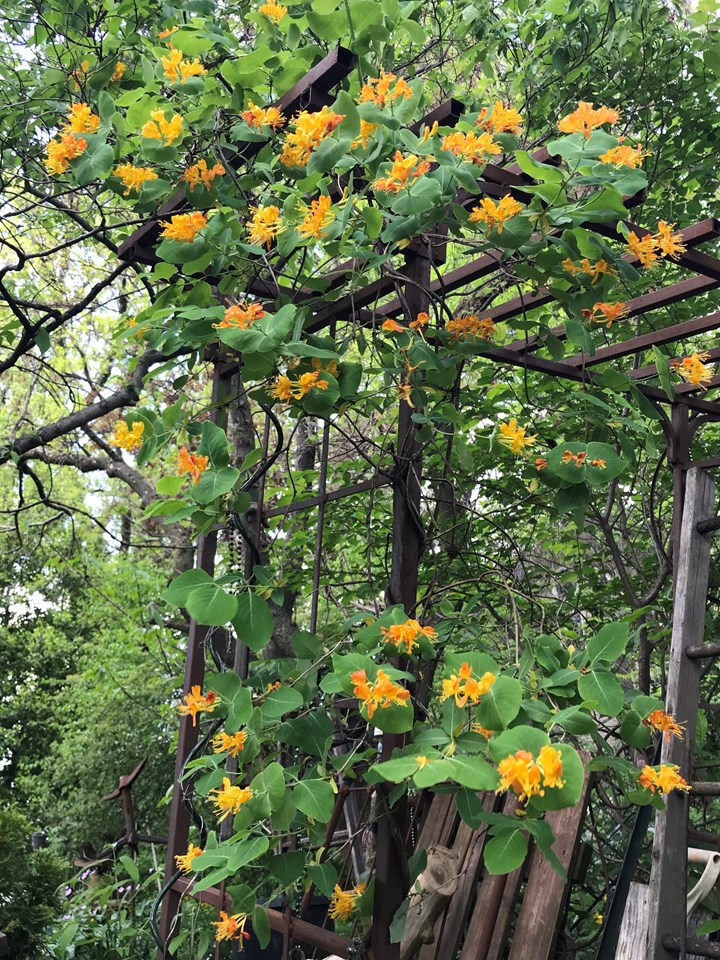Honeysuckle (Lonicera Flava)
Honeysuckle
Lonicera flava, commonly called yellow honeysuckle, is a deciduous, woody, twining vine which typically grows 10-20′. It is a Missouri native which occurs in rocky soils in woods, slopes, bluffs, ledges and stream margins in the Ozark region of the State. Elliptic green leaves (to 5″ long) are grayish green below and are paired along the stems, with the uppermost leaves on each stem joined at the bases (perfoliate). Two-lipped, tubular, mildly-fragrant, orange-yellow flowers (to 25″ long) appear in whorls at the stem ends in mid-spring. Flowers give way to round, fleshy, orange to red berries (1/4″ diameter) which appear in late summer. Berries are not edible, but birds love them. Hummingbirds and butterflies are attracted to the flowers.
Genus name honors Adam Lonitzer (1528-158- , German botanist, the author of an herbal (Kreuterbuch) many times reprinted between 1557 and 178
Specific epithet means yellow.

Easily grown in average, medium, well-drained soil in full sun to part shade. Needs a structure upon which to grow and some help in twining up that structure, or it may simply become shrubby or trail along the ground. Best flowering in full sun. Not invasive like the weedy Japanese honeysuckle (Lonicera japonica).
| Hardiness zone | 5 - 8 |
| Sun light | Full Sun To Part Shade |
| Water | Medium |
| Maintenance | Low |
No serious insect or disease problems.
Train on a trellis, arbor or fence. Good vine for a native plant garden or bird garden. May be grown along the ground as a ground cover in wild or naturalized areas.
| Common name | Honeysuckle |
| Botanical name | Lonicera Flava |
| Plant type | Vine |
| Family | Caprifoliaceae |
| Hardiness zone | 5 - 8 |
| Water | Medium |
| Maintenance | Low |
| Flower color | Orange-Yellow |
| Flowering period | April - May |
| Height | 10 - 20 Ft. |
| Width | 3 - 6 Ft. |